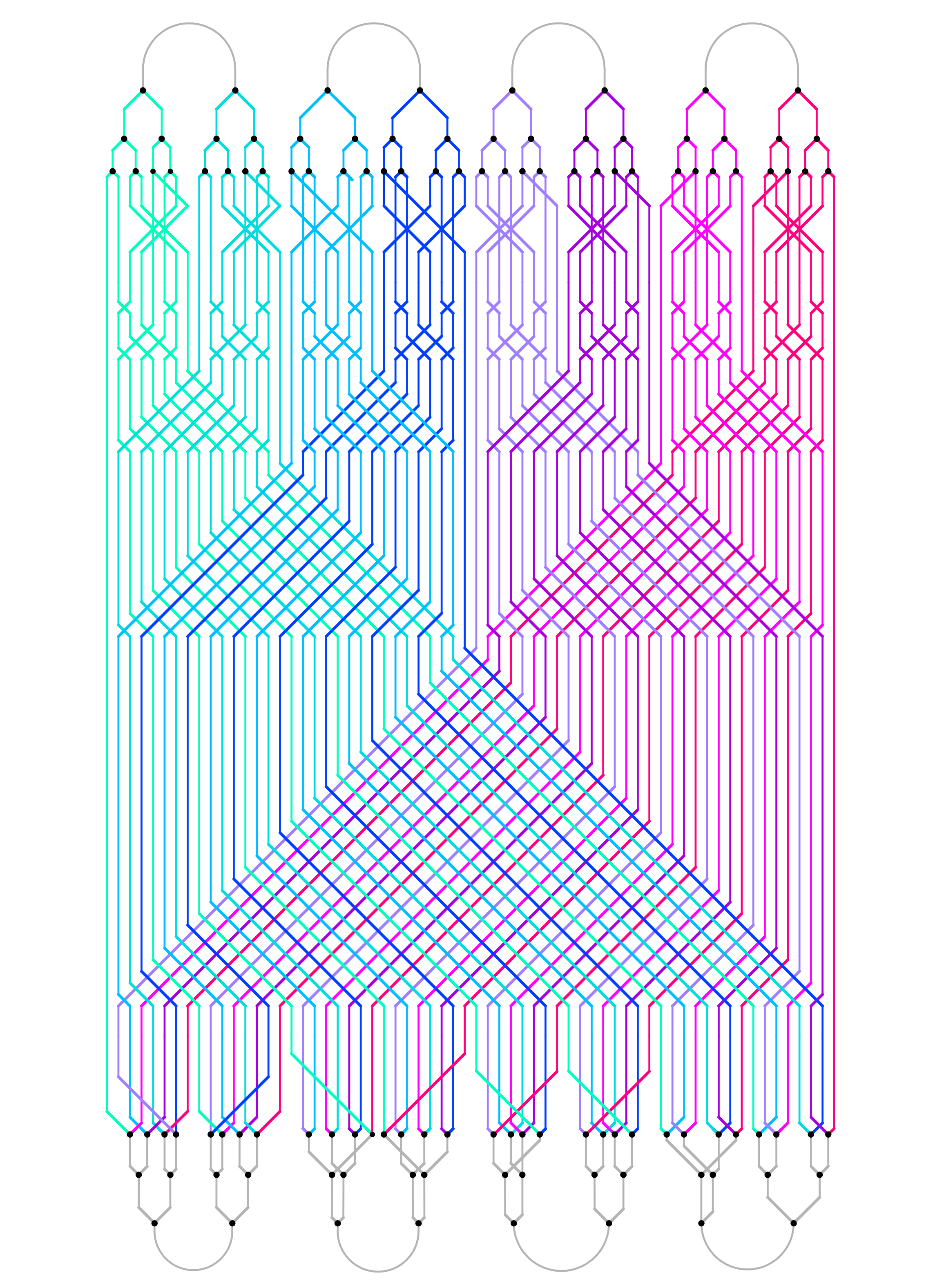Félix de la Fuente is an architect and dedicated amateur mathematician in love with discrete geometry, polytopes and combinatorics. This picture created by him shows a graph called the Balaban 11-cage.
A (3,11)-graph is a simple graph where every vertex has 3 neighbors and the shortest cycle has length 11. A (3,11)-cage is a (3,11)-graph with the least possible number of vertices. The Balaban 11-cage is the unique (3,11)-cage.
The Balaban 11-cage has 112 vertices and 168 edges. It was discovered by Balaban in 1973, and its uniqueness was proved by McKay and Myrvold in 2003.
Puzzle: The Fano plane has 168 symmetries, and it contains 28 triangles and also 28 ways of selecting a point and a line that are not incident to each other. 112 is 4 times 28. Is there a way to build the Balaban 11-cage starting from the Fano plane? One obstacle is that the Balaban 11-cage has a symmetry group of order 64.
The layout for this picture comes from here:
• P. Eades, J. Marks, P. Mutzel and S. North, Graph-drawing contest report, TR98-16, Mitsubishi Electric Research Laboratories, December 1998.
A German Wikicommons user named Gunther drew the picture of the Fano plane, put it on Wikicommons, and released it into the public domain.
Visual Insight is a place to share striking images that help explain advanced topics in mathematics. I’m always looking for truly beautiful images, so if you know about one, please drop a comment here and let me know!






Unfortunately there are errors in the picture I originally posted, which can be found on Wikimedia commons. The problems were noted by Viktor Toth:
and then:
Luckily Félix de la Fuente drew a better picture!
“The Balaban 11-cage has 112 edges and 168 edges.”
I think there’s an inconsistency in that line.
Yes indeed! Fixed.